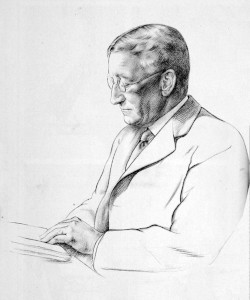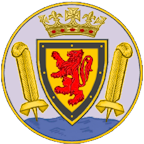John Snell
 John
Francis Cleverton Snell was born at Saltash on the 15th of December 1869,
the only son of Commander John Skinner Snell RN and his wife Harriet (née
Cleverton).
John
Francis Cleverton Snell was born at Saltash on the 15th of December 1869,
the only son of Commander John Skinner Snell RN and his wife Harriet (née
Cleverton).
Educated at Plymouth Grammar School, Finsbury Technical College, and King's College London, Snell started work as a pupil with Woodhouse and Rawson, electric light contractors, in 1885.
In 1889, after working for four years with Woodhouse and Rawson, Snell was appointed as a resident engineer at Crompton and Company who manufactured lamp fittings and the generators to supply them. There he worked with Colonel R E B Crompton on electricity supply work at Kensington and Notting Hill in London, and also at Stockholm.
In 1892 Snell married Annie Glendenning Quick of Biscovey, Cornwall, with whom he had at least one son.
Snell then spent a year working as assistant to Major-General Charles Edmund Webber, Consulting Engineer of the City of London Pioneer Company and of the Chelsea Electric Supply Company, as well as of other companies throughout the country. As Webber's representative, Snell carried out many electrical supply installations in London and at a number of country houses.
In 1893 Snell entered municipal service in London, as assistant electrical engineer of the St Pancras Vestry, at the time when the King's Road power station was under construction. In 1896 he was promoted to Borough Electrical Engineer at Sunderland, where he was responsible for an extension at Dunning Street station and for the design and construction of the Hylton Road station. Three years later he was also appointed Borough Tramway Engineer and undertook the conversion of the system to electric power. In 1905 he was appointed consulting engineer to the London County Council for its metropolitan electric power scheme, and (having set up in business in 1906 as an independant consulting engineer based in Westminster) was retained by them for the London Electric Supply Bill introduced in 1907.
In 1910 Snell joined Preece and Cardew, consulting engineers, as a partner. During this partnership he served as chief technical witness for the Crown in a court case concerning payment of compensation to the National Telephone Company. (The National Telephone Company brought together smaller local companies in the early years of the telephone. Under the Telephone Transfer Act 1911 it was taken over by the General Post Office on the 31st of December 1911.)
Snell was President of the Institution of Electrical Engineers for 1914, and during the First World War he was Honorary Commandant of the Engineering Institutions' Volunteer Engineer Corps, one of the original trustees appointed by the Army Council to form the Metropolitan Munitions Board, a member of the Ministry of Munitions Nitrogen Products Committee, a member of the Board of Trade's Electrical Trade Committee, Chairman of the Water Power Resources Committee, and Chairman of the Ministry of Agriculture and Fisheries Electro-Culture Committee. He also served on the Board of Trade's Electric Power Supply Committee, set up in 1917 as part of the government's plans for reconstruction of the nation's industries.
In 1919 the Electric Power Supply Committee recommended that generation and transmission should be a single unified system with state regulation and finance. Parliament rejected what would have been the effective nationalisation of the industry but did enact The Electricity (Supply) Act 1919, which established the Electricity Commission to coordinate regional organisation and to centralise generation in large power stations owned by a small number of joint electricity authorities. Resigning from his partnership with Preece and Cardew, Snell helped to set up the Electricity Commission and served as its first Chairman from 1919 to 1938, during which time the Electricity (Supply) Act 1926 was enacted, creating the Central Electricity Board and the National Grid operating at 132 kV (50 Hz). He also served on the General Board and Executive Committee of the National Physical Laboratory, the Advisory Council for Scientific and Industrial Research, the Imperial Wireless Telegraphy Committee, and the Electrification of Railways Advisory Committee.
In addition to being the author of two books, "The Distribution of Electrical Energy" and "Power Station Design", Snell wrote a large number of papers and articles on engineering subjects. He was at different periods of his career President of the Incorporated Municipal Electrical Association, and of the British Electrical and Allied Industries' Association. He was a Fellow of the American Institute of Electrical Engineers, a Chairman of the Sectional Electrical Committee of the British Standards Association, and a Fellow of the Geological Society. For his outstanding work as Chairman of the Electricity Commission, Snell was made a Knight Grand Cross of the British Empire on the 3rd of June 1925. He was appointed Fellow of Kings College in 1929, and the Institution of Electrical Engineers (now the Institution of Engineering and Technology) awarded him the Faraday Medal for 1938.
Sir John Francis Cleverton Snell GBE died after an operation at the London Clinic on the 6th of July 1938.
page updated 2025-03-21
